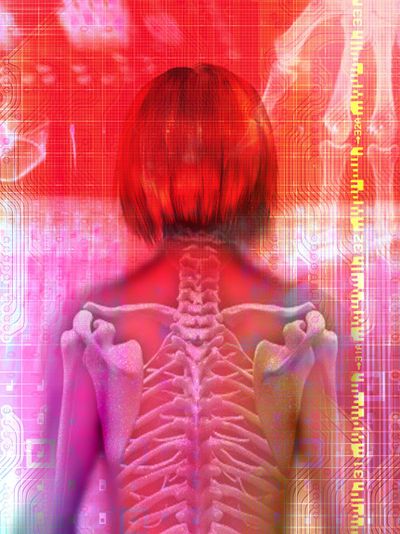Osteoporosis is more common and more dangerous than most think

Osteoporosis doesn’t just happen to old ladies.
Rather, it’s a disease that can weaken anyone’s bones, regardless of age or sex, putting them at higher risk of fracture – which can lead to pain, deformities and a loss of mobility. But osteoporosis can be prevented through diet or exercise, or detected early through testing.
About 54 million people in the U.S. have or are at risk of osteoporosis or low bone mass.
It’s “a silent disease,” according to the National Osteoporosis Foundation, “because you can’t feel your bones getting weaker.”
The biggest concern with osteoporosis is breaking bones. The National Institutes of Health estimates that four in 10 women and one in 10 men older than 50 will break a hip, spine or wrist. In addition, according to the NIH, 1.5 million fractures among older people and $18 billion in related costs are a direct result of osteoporosis in the U.S.
Half the people who fracture a hip lose their independence, and 20 percent to 30 percent die within a year, said Dr. Lynn Kohlmeier, an endocrinologist with Spokane Osteoporosis and Spokane Internal Medicine and an executive board member of the Washington Osteoporosis Coalition. Hip fractures account for 300,000 hospitalizations a year.
Detecting the problem
The state coalition estimates that by 2020, half of Americans older than 50 will be at risk for fracture from osteoporosis.
It can be detected through testing.
“If you broke a bone after the age of 50, even if in an accident, you need a hip and spine DXA BMD test to know your future fracture risk,” Kohlmeier said.
Kohlmeier said screening with a hip and spine DXA, or “dual-energy X-ray absorptiometry,” bone mineral density test is quick and painless.
Usually covered by insurance, it’s appropriate for post-menopausal women and others with risk factors for osteoporosis, such as the use of steroids, prednisone or other medications, including some anti-seizure drugs.
It’s also appropriate for men with testosterone deficiency. “We don’t think of men with osteoporosis as much as we should, since a quarter of all hip fractures occur in men,” Kohlmeier added.
Because the DXA bone mineral density test can’t be done until the person has reached peak bone mass, it’s not performed on people younger than 30. Young people at risk for osteoporosis can, however, get a heel-ultrasound bone density test.
Prevention and treatment
While osteoporosis has multiple causes – including excessive drinking, smoking and genes – it can be prevented and treated.
Preventing osteoporosis – or living with it – takes healthy eating and exercise.
“Though the biggest risk for fracture is aging, if you work to build strong bones when you are young and growing, your good peak bone mass will protect you from fracture your whole life,” Kohlmeier said.
Some prevention tips:
• Spend at least 30 minutes a day exercising. To keep your bones as healthy as possible, the National Osteoporosis Foundation recommends weight-bearing and strength-training exercises. Kohlmeier suggests back-strengthening exercises and high-impact workouts such as running, jumping and tennis.
Swimming and biking can improve cardiovascular health but aren’t the best methods for strengthening bones.
“Studies show that at all ages, improvements in back and core strength reduce injury and improve spine bone strength long term,” Kohlmeier added.
The National Institutes of Health recommends 30 minutes of physical activity a day, strength training two to three times a week and balance training (or classes such as yoga or tai chi) once a week for fall prevention.
• Bone-healthy nutrition includes milk and other calcium-rich foods or supplements. According to the NIH, our bodies deposit and withdraw calcium from our bones each day. If we aren’t taking in enough calcium, we can quickly be in a deficit, like an overdrawn savings account.
• Reduce alcohol and soda intake, and if you smoke, quit.
• Make sure you’re getting enough Vitamin D. Deficiency also contributes to osteoporosis risk.
“Vitamin D is a hormone, not a vitamin, made in your skin from UVB sunlight, and helps your bones and muscles be the strongest they can be,” Kohlmeier said.
• Reduce fall risk by replacing dim lights and loose rugs.
In addition to exercise and nutrition, several medications are available to treat osteoporosis.
More are in the works. Several pharmaceutical companies are testing medications that essentially mimic the effects of exercise.
Kohlmeier said she has high hopes for anti-sclerostin antibodies, still in trials. The drugs can “enhance the body’s own formation of bone in what appears to be a safe and reversible way,” she said.